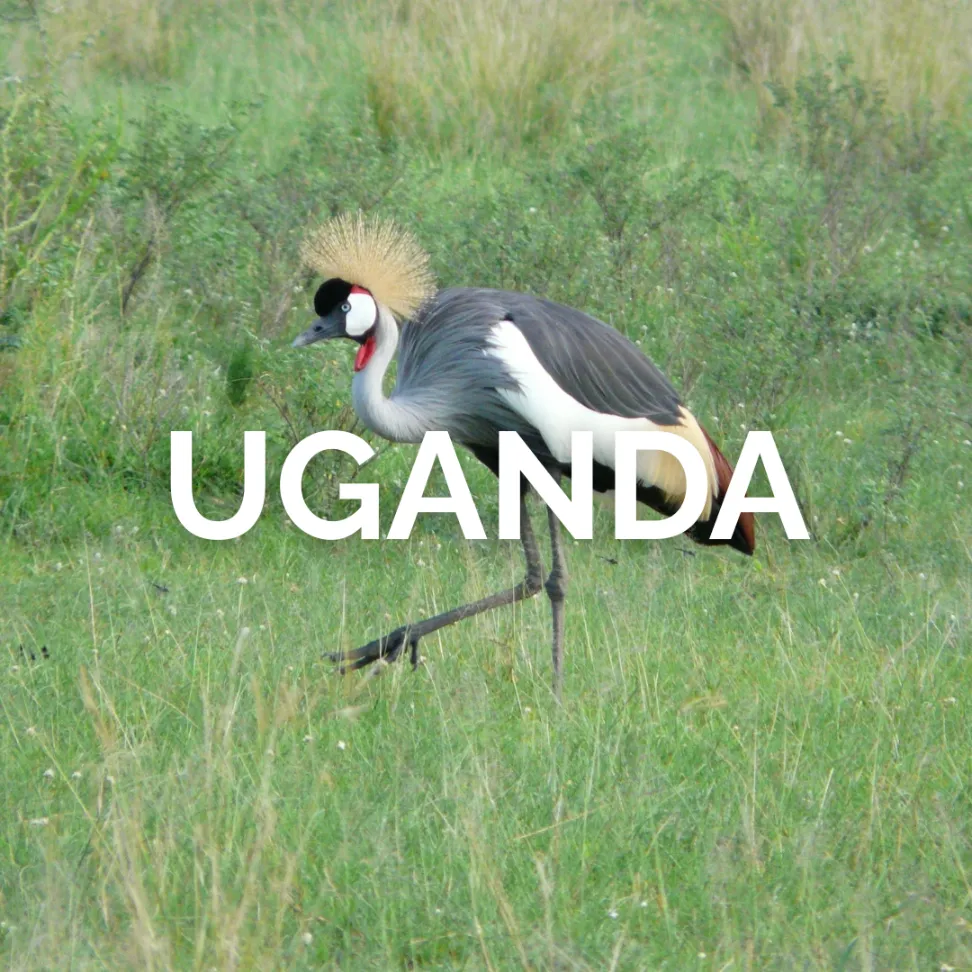- Proffessional Tour Guides
- Value for Money
- Premium Unforgetable Experience
- Customer Services
Kenya Safaris and Tour Packages
Whenever this name is mentioned. Wildlife, sandy beaches, landscapes, endless plains and its warm-hearted citizens come in mind.
Home to the famous Masai mara and other less mentioned game parks which are home to special wildlife and unending memories.
QUICK NOTES: Nairobi is the Capital City of Kenya. It is situated at in South-Central Kenya, 140 Kilometers (87 miles) south of the Equator. It is surrounded by 113 km² (70 mi²) of plains, cliffs and forest that makes up the city’s Nairobi National Park. It is adjacent to the eastern edge of the Rift Valley, and to the west of the city, are The Ngong Hills. Mount Kenya is situated north of Nairobi, and Mount Kilimanjaro is towards the south-east.
It is the most populous city in East Africa, with a current estimated population of about 3.5 million. This makes it the 14th largest city in Africa.
Being Kenya’s capital, and the arrival point for many visitors, it is well served by leading international airlines, and regional road networks linking it to other major East African urban Centers.
THINGS YOU CAN DO:
- Customized safaris for families, solo travelers, companies and groups.
- Honeymoon stays
- Educational school trips
- Agro tours
- Golf tours
- Cultural safaris
- Corporate travel
- Mountain climbing
- Deep sea diving
- Deep sea fishing
- Scenic helicopter rides
- Hot air balloon rides
Popular Destinations In Kenya
Overview
The Maasai Mara National Reserve, located in southwestern Kenya, is the country’s most celebrated wildlife area and one of the most famous safari destinations in the world. Covering approximately 1,510 square kilometers, it borders Tanzania’s Serengeti National Park, forming a continuous ecosystem that supports one of the largest concentrations of animals in Africa. The reserve’s open savannahs, winding rivers, and scattered acacia trees create the perfect environment for predators and grazers alike, making it the quintessential African safari experience.
Why It’s Famous
The Maasai Mara is globally known for the Great Wildebeest Migration, an extraordinary event that takes place between July and October. During this period, over a million wildebeest, accompanied by zebras and gazelles, cross from the Serengeti into the Mara in search of fresh pastures. The dramatic river crossings and constant predator-prey interactions have earned it recognition as one of the greatest natural spectacles on Earth.
Beyond the migration, the reserve offers exceptional year-round game viewing, with one of Africa’s highest densities of lions, cheetahs, and leopards. Large herds of elephants, buffalo, and giraffes roam freely, while more than 450 bird species inhabit its diverse landscapes. The Maasai people, who have lived in harmony with the land for centuries, enrich every visit with a cultural perspective that connects nature, tradition, and conservation.
Gallery
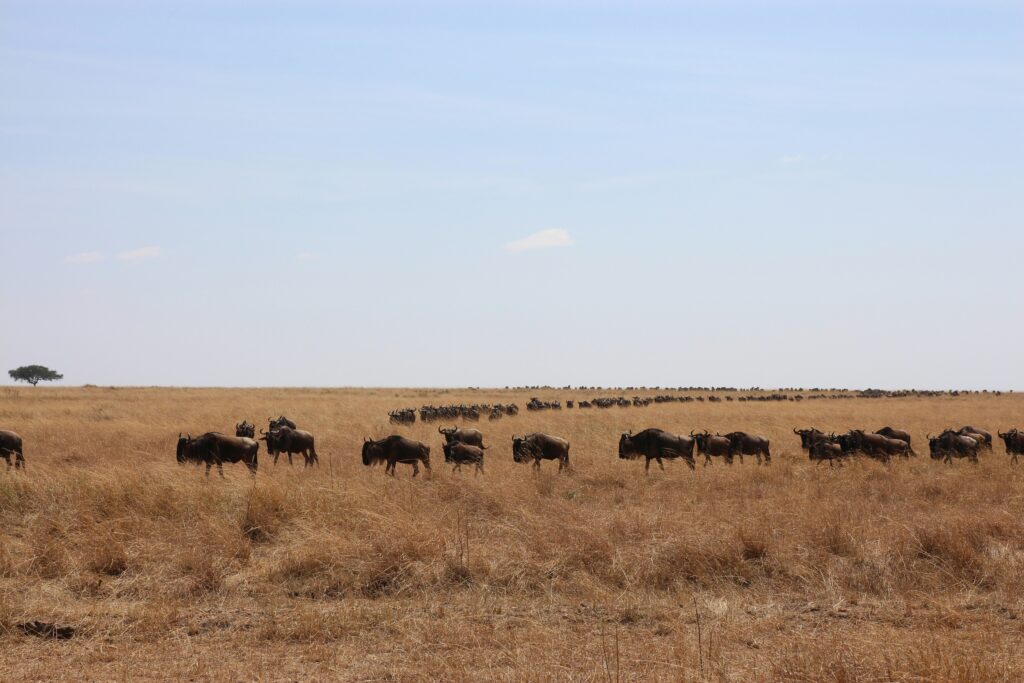
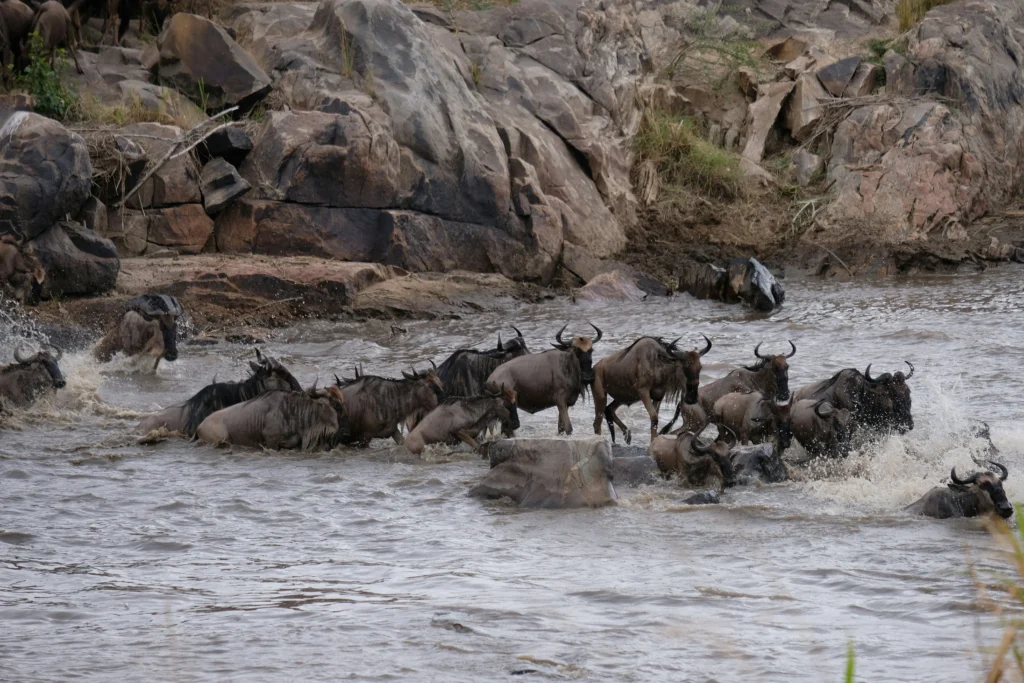
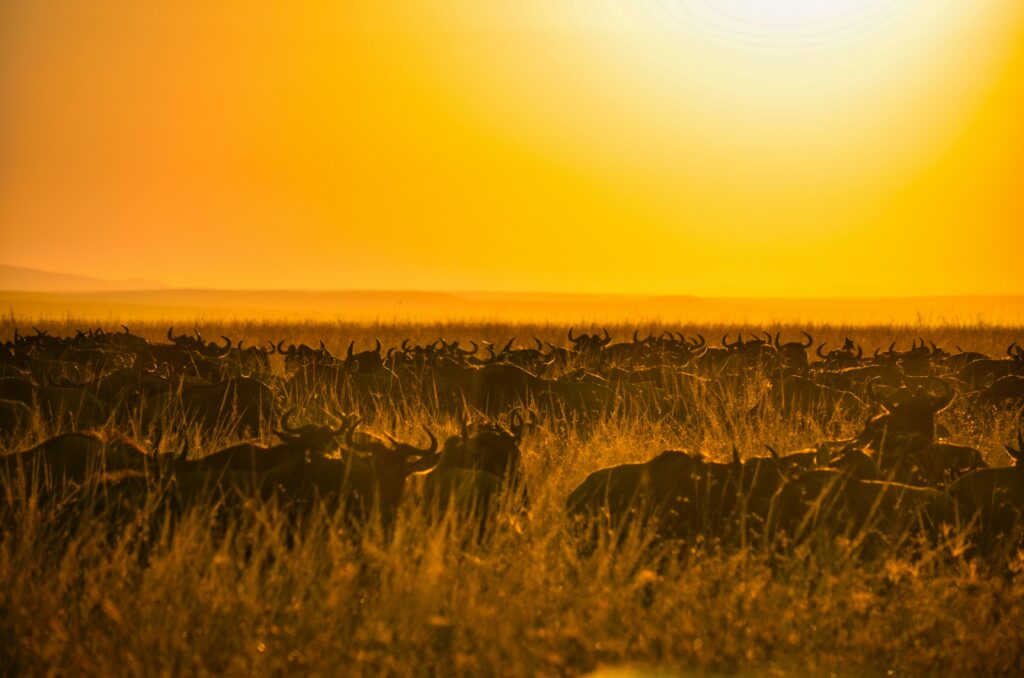
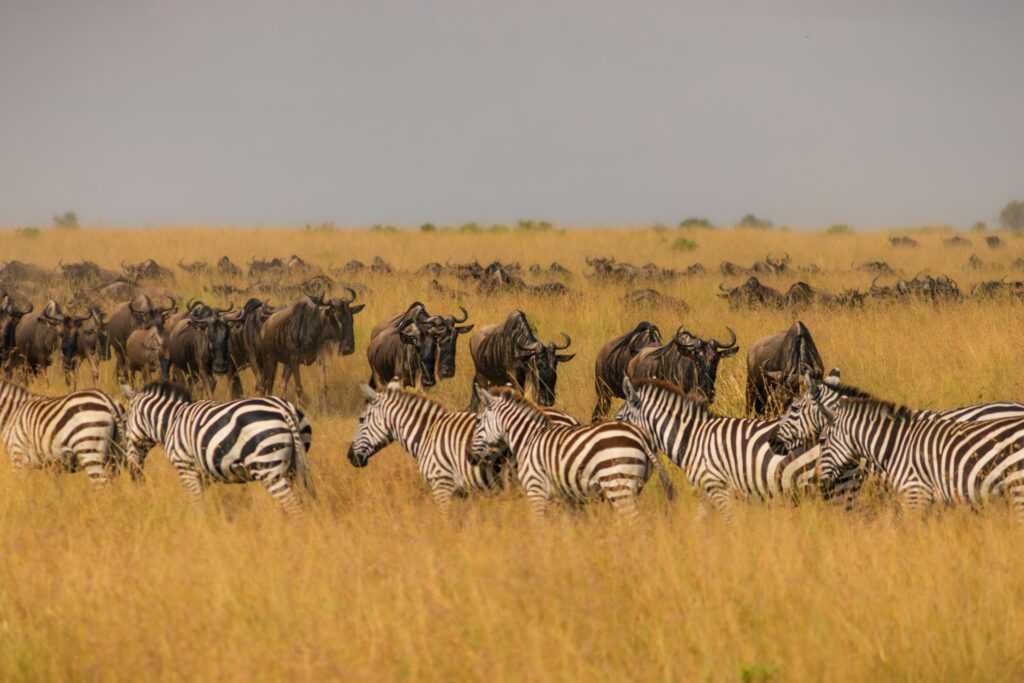
Additional Information
Best Time to Visit
• July to October – The dry season and peak of the Great Migration, offering the best overall wildlife viewing.
• December to February – Warm and clear conditions, ideal for photography and predator sightings with fewer visitors.
• March to May – The long rains transform the landscape into lush greenery, attracting birdlife and providing a quieter experience.
Highlights
• The annual Great Wildebeest Migration, one of the world’s most dramatic wildlife movements, involving over a million animals.
• Consistent opportunities to see the Big Five – lion, leopard, elephant, buffalo, and rhino – within a relatively compact area.
• Exceptional predator density, with frequent sightings of lions on hunts, cheetahs on open plains, and leopards in acacia trees.
• A wide diversity of wildlife, from elephants and giraffes to antelopes and hippos, supported by a healthy ecosystem.
• More than 450 recorded bird species, making the reserve a rewarding destination for birdwatchers.
• Insight into Maasai culture through village visits and community-led conservation experiences that highlight traditional life.
Travel Tips
• Early morning and late afternoon game drives provide the best light and wildlife activity.
• Book accommodations well in advance if visiting during migration months, as space fills quickly.
• Neutral-colored clothing, sunscreen, insect repellent, and binoculars are essential items for safaris.
• Follow ranger guidance and park rules to ensure safety and respect for wildlife.
• Arrange cultural visits through verified Maasai community programs to ensure authenticity and direct local benefit.
Overview
Amboseli National Park is located in southern Kenya near the border with Tanzania, covering an area of about 392 square kilometers. It is one of Kenya’s oldest and most visited parks, set against the stunning backdrop of Mount Kilimanjaro, Africa’s highest peak. The park is characterized by open plains, swamps, and acacia woodlands that sustain a rich variety of wildlife throughout the year.

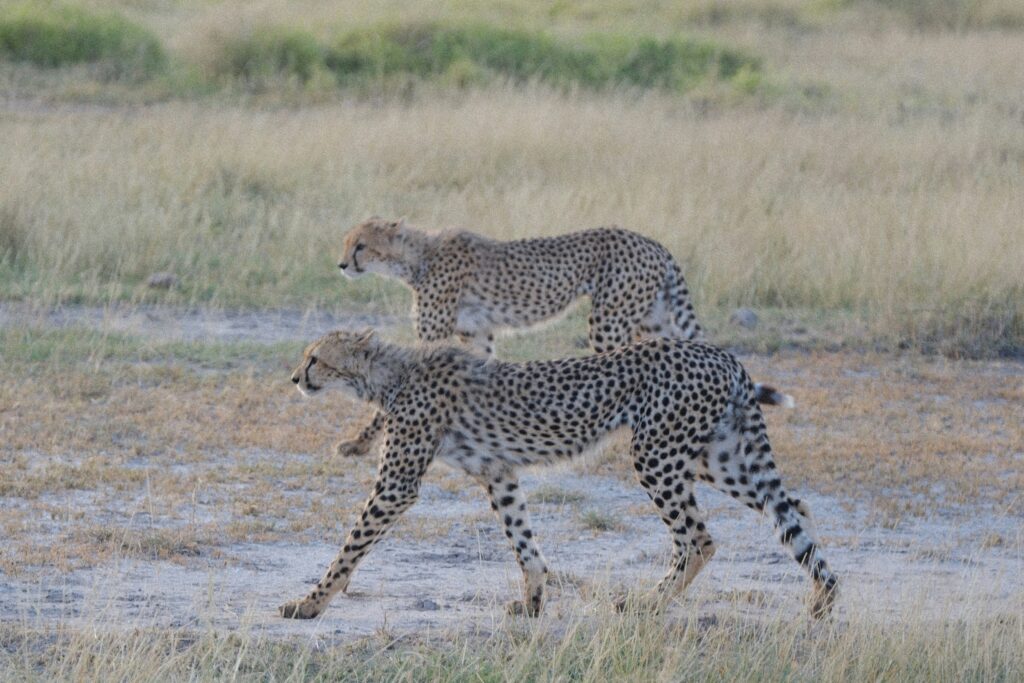
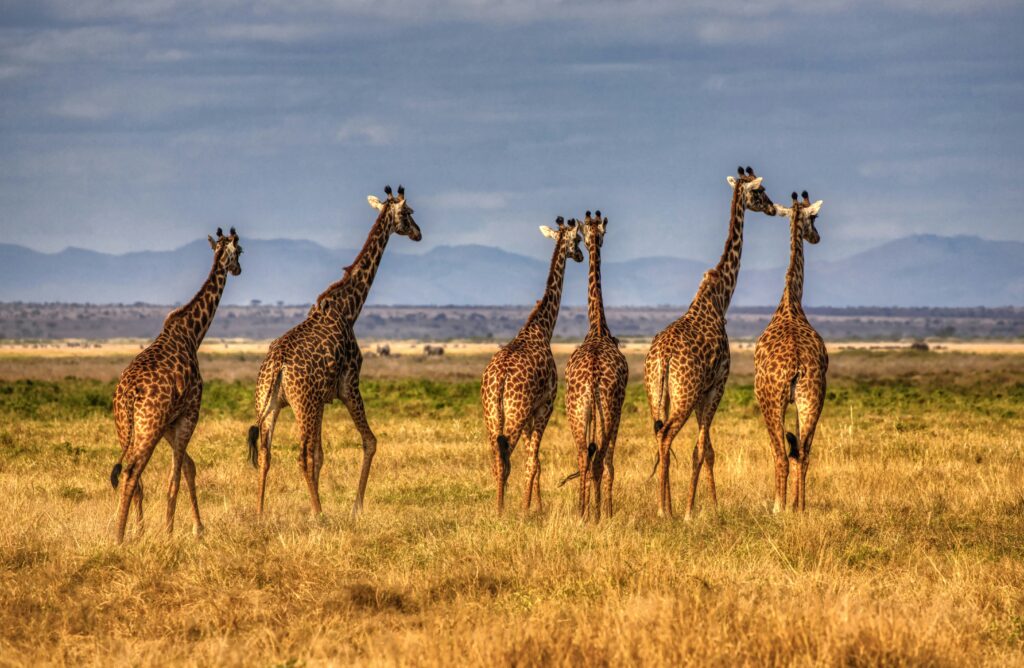
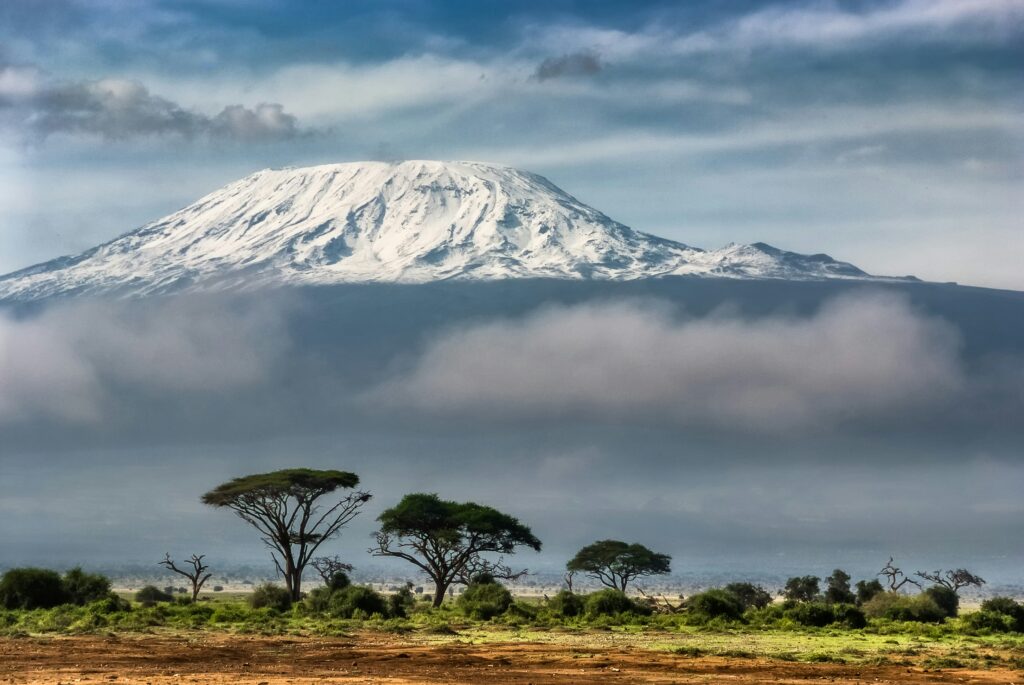
Why It’s Famous
Amboseli is world-renowned for its large herds of elephants, often photographed with Mount Kilimanjaro towering in the background. It has become one of Africa’s most important elephant research areas, providing invaluable data on elephant behavior and conservation. The park also offers excellent opportunities to observe predators and plains game in close proximity, with clear visibility across its open landscapes.
Additional Information
Best Time to Visit
• June to October offers dry weather, sparse vegetation, and the best visibility for wildlife viewing.
• November and May bring short and long rains that transform the park with lush scenery and fewer visitors.
• January and February remain warm and clear, ideal for photography and birdwatching.
Highlights
• The park’s iconic views of Mount Kilimanjaro, particularly clear during early morning and late afternoon.
• Large herds of elephants known for their size and calm nature, making Amboseli a key location for elephant observation and photography.
• A variety of wildlife including lions, cheetahs, giraffes, zebras, and over 400 bird species thriving in its wetlands and plains.
• Observation Hill, a natural viewpoint offering panoramic views over the park and Amboseli’s seasonal lakes.
• Interaction with local Maasai communities who live around the park and maintain traditional pastoral lifestyles.
Travel Tips
• The best times for clear views of Mount Kilimanjaro are early morning and late evening before cloud cover builds.
• Combine Amboseli with nearby destinations such as Tsavo or Chyulu Hills for a more diverse safari circuit.
• Lightweight, neutral-colored clothing, sun protection, and a camera with a zoom lens are essential for comfort and photography.
• Respect the elephants’ space; maintain distance during encounters, especially around breeding herds.
• Cultural visits should be organized through recognized Maasai programs to ensure authenticity and community benefit.
Overview
Samburu National Reserve lies in northern Kenya along the banks of the Ewaso Nyiro River and covers about 165 square kilometers. The reserve’s semi-arid landscape of rugged hills, acacia woodlands, and open savannah contrasts sharply with Kenya’s southern parks. Despite its smaller size, Samburu supports an impressive range of wildlife adapted to the dry environment and offers an authentic, less crowded safari experience.
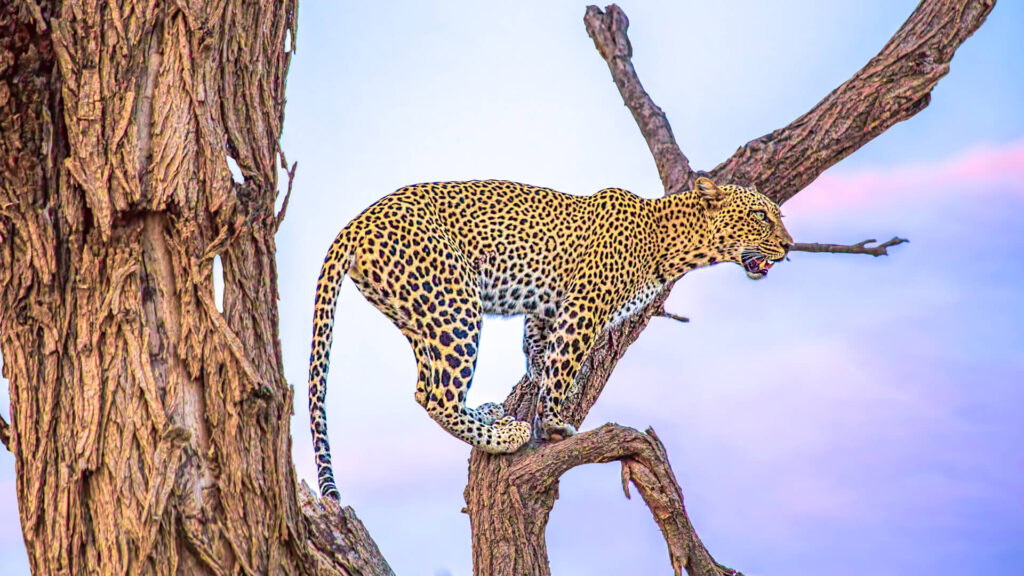
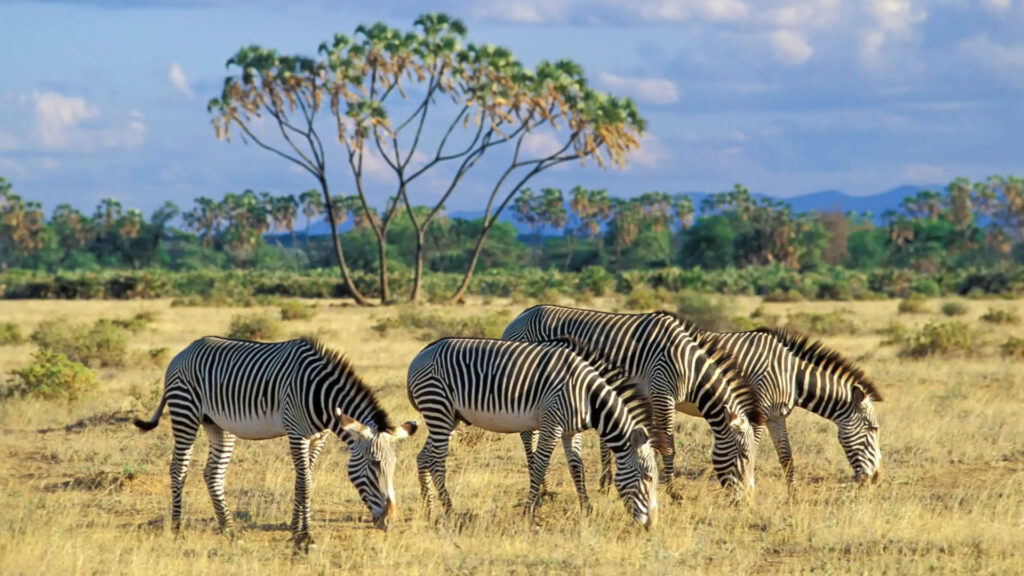
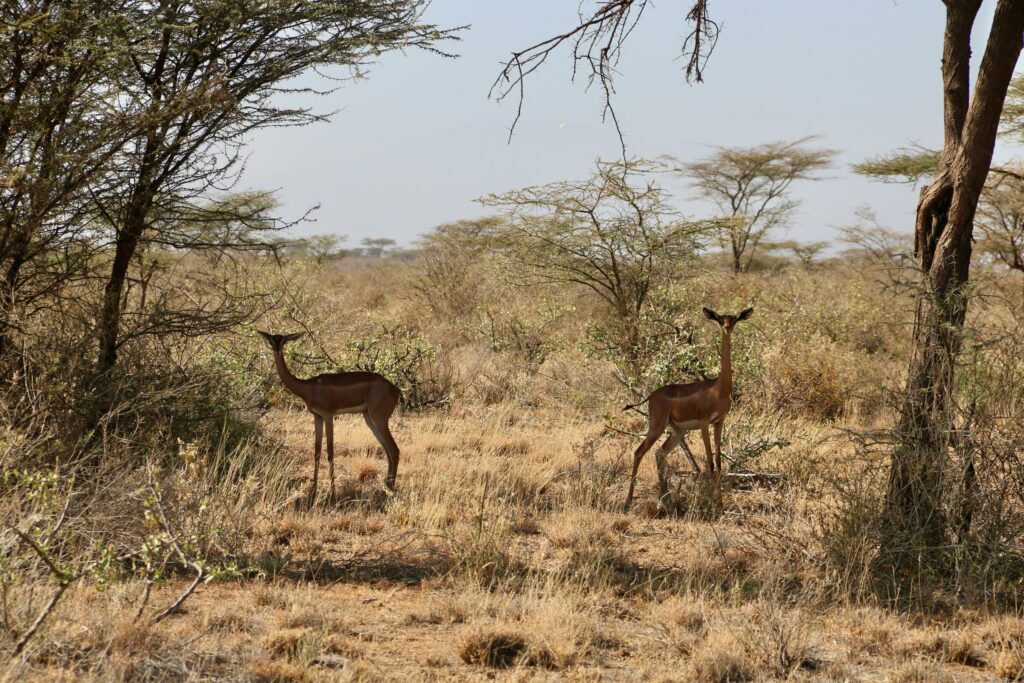
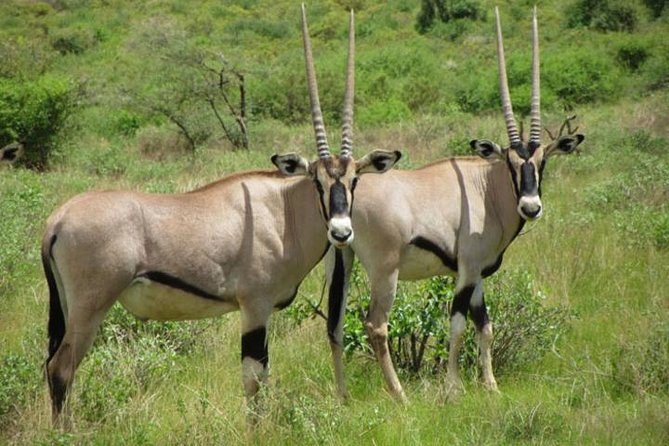
Why Visit
Samburu is famous for its unique wildlife species found only north of the Equator, collectively known as the “Samburu Special Five.” These include the Grevy’s zebra, Somali ostrich, reticulated giraffe, beisa oryx, and gerenuk. The Ewaso Nyiro River is the reserve’s lifeline, attracting large numbers of animals during dry periods and providing excellent game viewing opportunities. Samburu is also known for its close association with the Samburu people, whose pastoral culture and colorful traditions remain central to the region’s identity.
Additional Information
Best Time to Visit
• June to October offers dry weather and the best wildlife visibility around the Ewaso Nyiro River.
• December to March provides warm, clear conditions suitable for photography and fewer visitors.
• April to May brings the long rains, making the landscape green and scenic but with limited accessibility in some areas.
Highlights
• The Samburu Special Five – Grevy’s zebra, Somali ostrich, reticulated giraffe, beisa oryx, and gerenuk – species rarely seen in other Kenyan parks.
• The Ewaso Nyiro River, which sustains elephants, lions, leopards, and a wide variety of plains game year-round.
• Reliable sightings of large elephant herds and big cats, often seen along riverbanks and open plains.
• Birdwatching opportunities with more than 450 recorded species, including vultures, eagles, and hornbills.
• Interaction with the Samburu people, offering insight into traditional pastoral life and local conservation practices.
• Scenic landscapes characterized by rocky outcrops, riverine forests, and open savannahs ideal for photography.
Travel Tips
• Early morning and late afternoon drives provide the best wildlife activity and lighting conditions.
• A 4×4 vehicle is recommended due to rough terrain, especially during or after rains.
• Carry sufficient drinking water, sunscreen, and a hat as the climate is generally hot and dry.
• Cultural visits to Samburu villages should be arranged through licensed guides to ensure respectful engagement.
• Combine Samburu with nearby reserves such as Buffalo Springs or Shaba for a more diverse safari experience.
Overview
Amboseli National Park is located in southern Kenya near the border with Tanzania, covering an area of about 392 square kilometers. It is one of Kenya’s oldest and most visited parks, set against the stunning backdrop of Mount Kilimanjaro, Africa’s highest peak. The park is characterized by open plains, swamps, and acacia woodlands that sustain a rich variety of wildlife throughout the year.
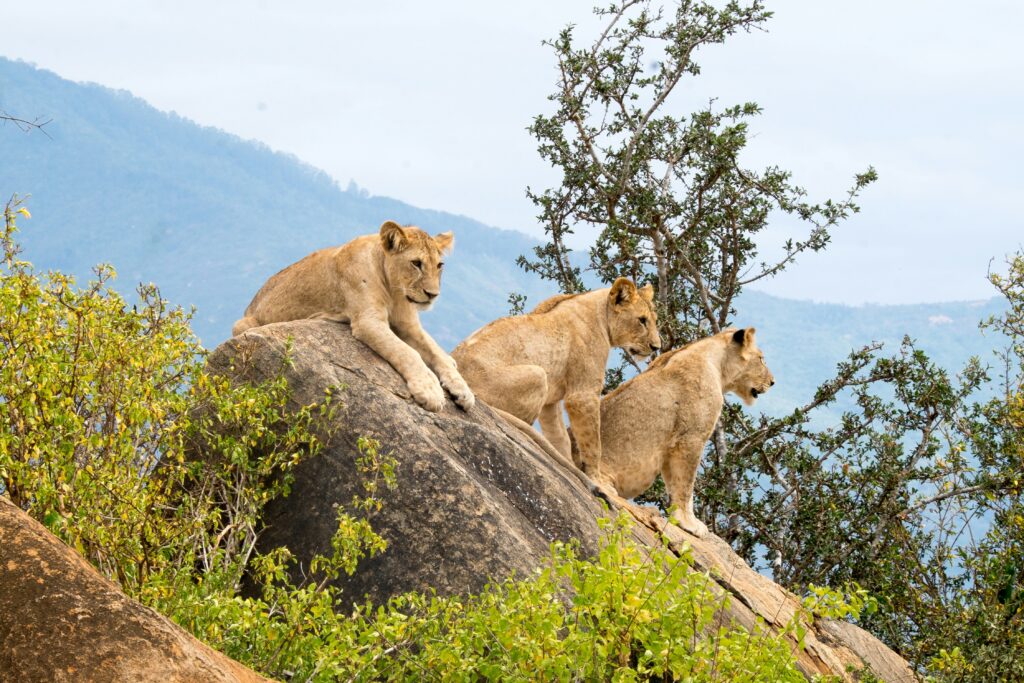

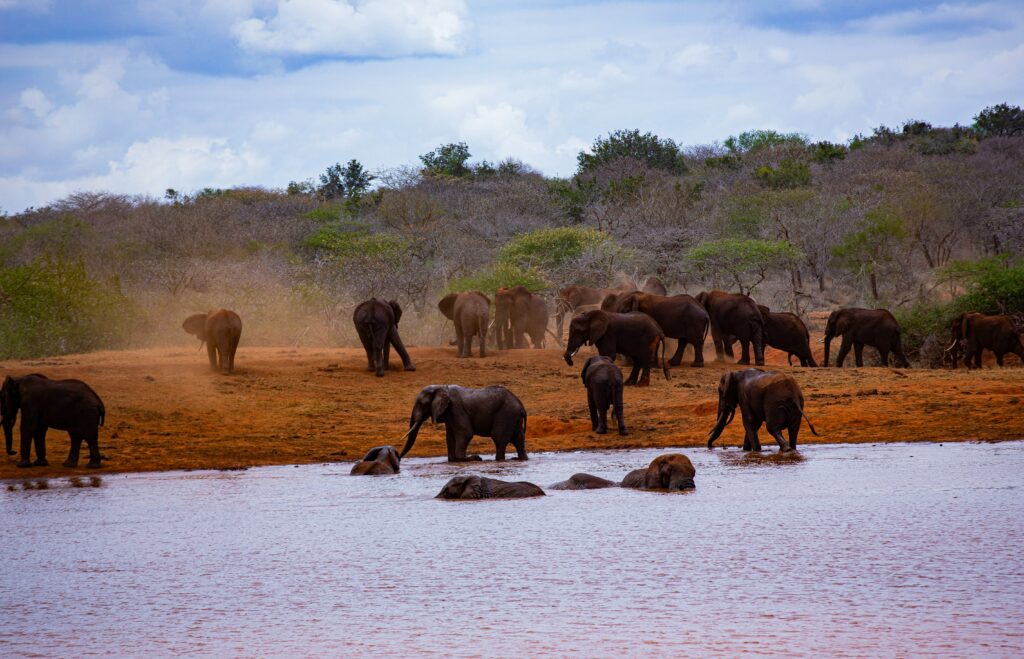
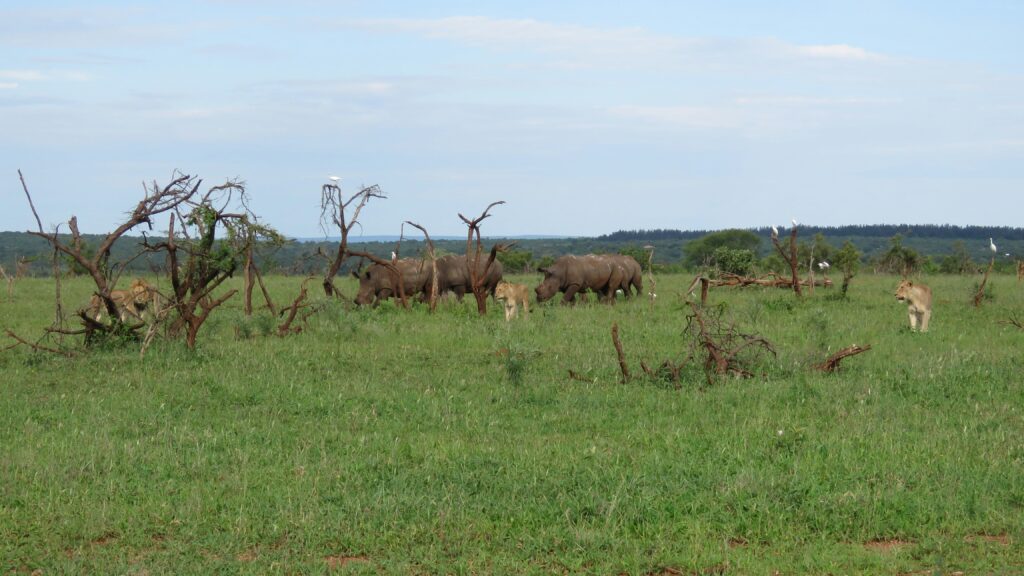
Why Visit Tsavo
Tsavo is famous for its dramatic landscapes, historic railway legends, and the iconic “red elephants” that are often seen dusted with the region’s reddish soil. The area gained global attention during the construction of the Uganda Railway in the 1890s, when two maneless lions, known as the “Man-Eaters of Tsavo,” attacked workers — a story that remains part of its heritage. Today, Tsavo East is known for its open plains and large herds of elephants, while Tsavo West offers scenic terrain with volcanic formations, natural springs, and a higher concentration of wildlife near water sources.
Additional Information
Best Time to Visit
• June to October is the dry season, providing excellent game viewing as animals gather around permanent water sources.
• January and February are warm and dry, ideal for photography and birdwatching.
• March to May brings the long rains, creating lush vegetation and fewer visitors, though some roads may become challenging to access.
Highlights
• The characteristic red elephants of Tsavo, coated with the region’s iron-rich soil and seen in large herds throughout both parks.
• The vast open savannahs of Tsavo East, where visitors can spot elephants, lions, giraffes, and large herds of buffalo and zebras.
• The rugged volcanic scenery of Tsavo West, including the Shetani Lava Flows, Mzima Springs, and Chyulu Hills.
• A variety of birdlife exceeding 500 species, making Tsavo one of Kenya’s most rewarding destinations for birdwatchers.
• The historical background of the “Man-Eaters of Tsavo,” which adds cultural and historical depth to the safari experience.
• Fewer crowds compared to other parks, offering a more secluded and authentic wilderness experience.
Travel Tips
• A 4×4 vehicle is recommended, especially for travel during the rainy season or for exploring remote sections of Tsavo East.
• Combine both Tsavo parks for a complete experience, as Tsavo East offers wide-open game viewing while Tsavo West provides scenic landscapes and geological interest.
• Carry sufficient drinking water, sunscreen, and insect repellent, as the climate is generally hot and dry.
• Early morning and evening drives offer the best wildlife sightings and photography conditions.
• Plan fuel stops carefully, as distances within the parks can be long and service stations limited.
• Visit Mzima Springs with a guide to observe hippos and fish through the underwater viewing chamber.
Overview
Kenya’s coastal towns of Mombasa, Malindi, and Kilifi lie along the Indian Ocean and are known for their blend of Swahili culture, historical heritage, and pristine beaches. Each town offers a distinct character: Mombasa is the vibrant gateway and cultural hub, Malindi combines history with marine adventure, and Kilifi is a quieter destination ideal for relaxation and water-based leisure. Together, they showcase the diversity of Kenya’s coastline, where centuries of trade, culture, and nature meet.
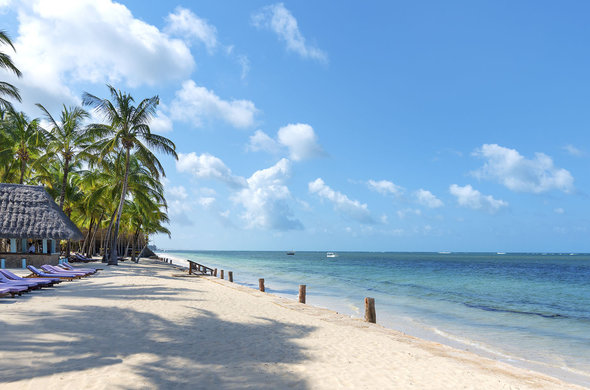
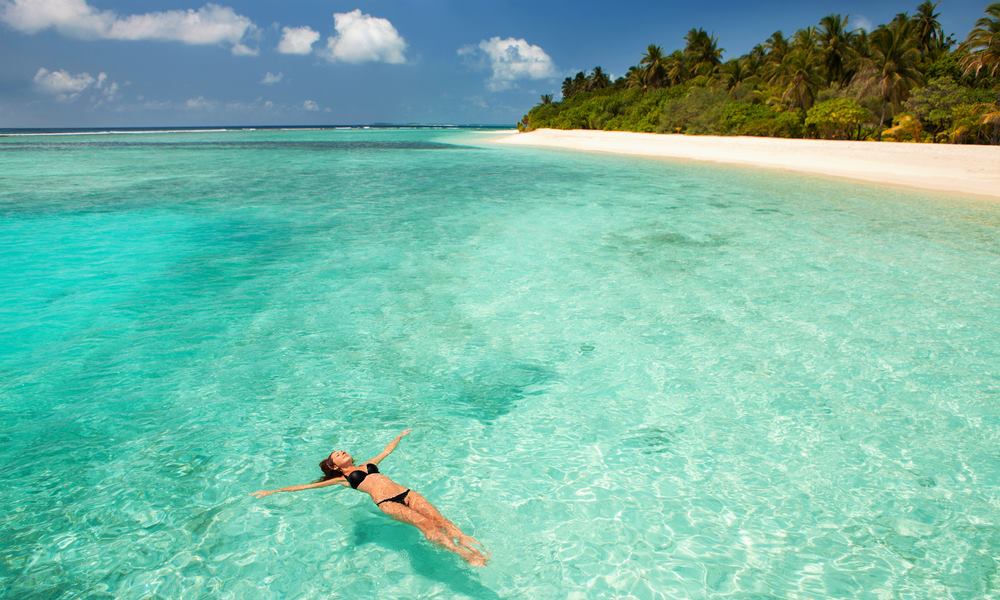


Why Visit Kenya’s Coastal Towns
This stretch of Kenya’s coast is famous for its white sandy beaches, coral reefs, and historical ties to ancient trade routes that linked Africa, Arabia, and Asia. Mombasa’s Old Town and Fort Jesus reflect Portuguese and Arab influence dating back to the 16th century. Malindi gained prominence as a historic Swahili settlement visited by explorers like Vasco da Gama, while Kilifi is known for its calm lagoons and laid-back charm. The region also hosts rich marine biodiversity within protected marine parks, offering world-class diving, snorkeling, and fishing experiences.
Additional Information
Best Time to Visit
• December to March offers warm, sunny weather ideal for beach activities, snorkeling, and diving.
• July to October provides pleasant temperatures and calmer seas, perfect for exploring and water sports.
• April to June is the long rainy season, bringing occasional showers but fewer tourists and lower accommodation rates.
Highlights
• Mombasa’s Fort Jesus, a UNESCO World Heritage Site, built by the Portuguese in the 16th century and central to coastal history.
• The narrow streets of Mombasa Old Town lined with Swahili, Arab, and Indian architecture reflecting centuries of cultural exchange.
• Malindi Marine National Park, known for its coral reefs, colorful fish, and opportunities for glass-bottom boat rides and diving.
• Kilifi’s Bofa Beach, one of the most serene stretches of sand on the Kenyan coast, ideal for swimming and kayaking.
• The Gede Ruins near Malindi, an ancient Swahili city offering insight into early coastal civilization.
• Rich marine biodiversity along the coast, including dolphins, turtles, and tropical fish species visible in shallow waters.
• The vibrant coastal cuisine influenced by Swahili, Arabic, and Indian traditions, featuring fresh seafood and coconut-based dishes.
Travel Tips
• Light clothing, sunscreen, and beachwear are essential due to the tropical climate.
• Respect local customs, especially in towns and villages where Swahili culture is conservative.
• Early mornings and evenings are ideal for exploring historical sites before the day’s heat.
• Marine parks require entrance fees; ensure you book snorkeling or diving tours with certified operators.
• Combine Mombasa, Malindi, and Kilifi in one itinerary to experience both historical heritage and coastal leisure.
• Local transport between towns is available by road or short flights; private transfers are more convenient for flexibility.
Overview
The Taita Hills are located in southeastern Kenya near Voi, forming part of the Eastern Arc Mountains. Rising from the plains of Tsavo, the hills feature a unique mix of forests, valleys, and rolling farmland. They are recognized for their rich biodiversity, cool climate, and striking scenery that contrasts sharply with the surrounding dry savannah. The area also includes private wildlife conservancies such as Taita Hills Wildlife Sanctuary and Lumo Community Wildlife Sanctuary, which connect to Tsavo West National Park and support free-ranging wildlife.
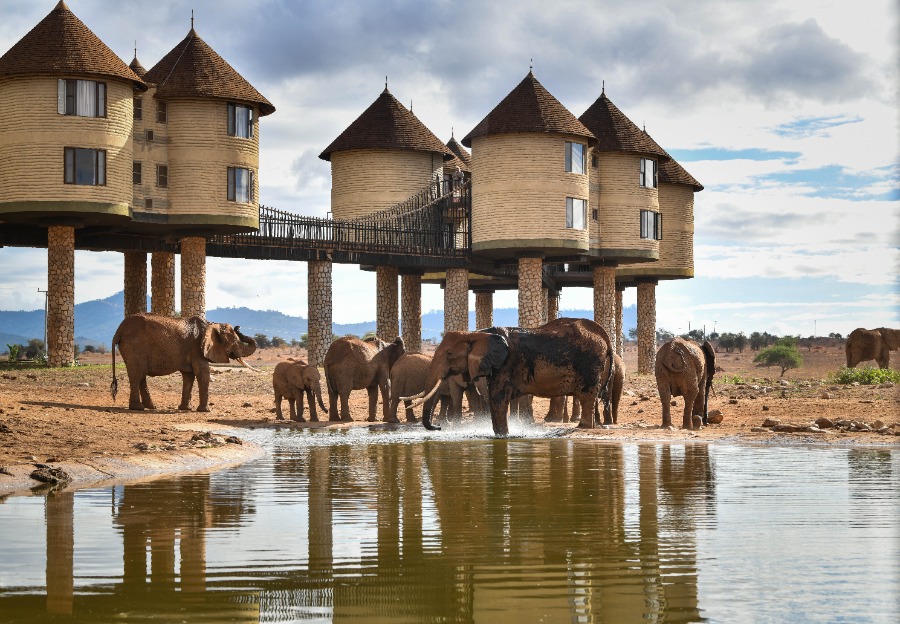

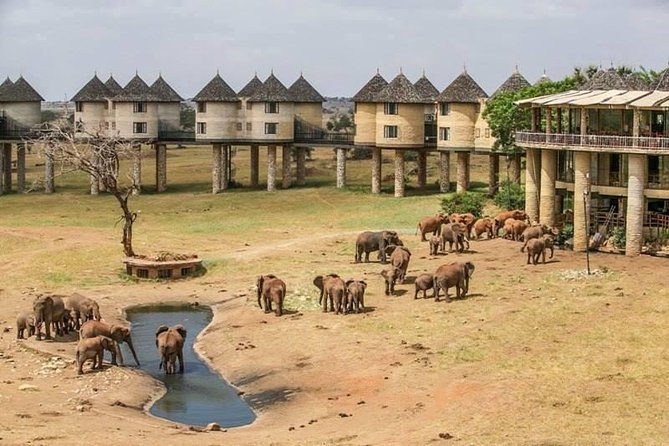
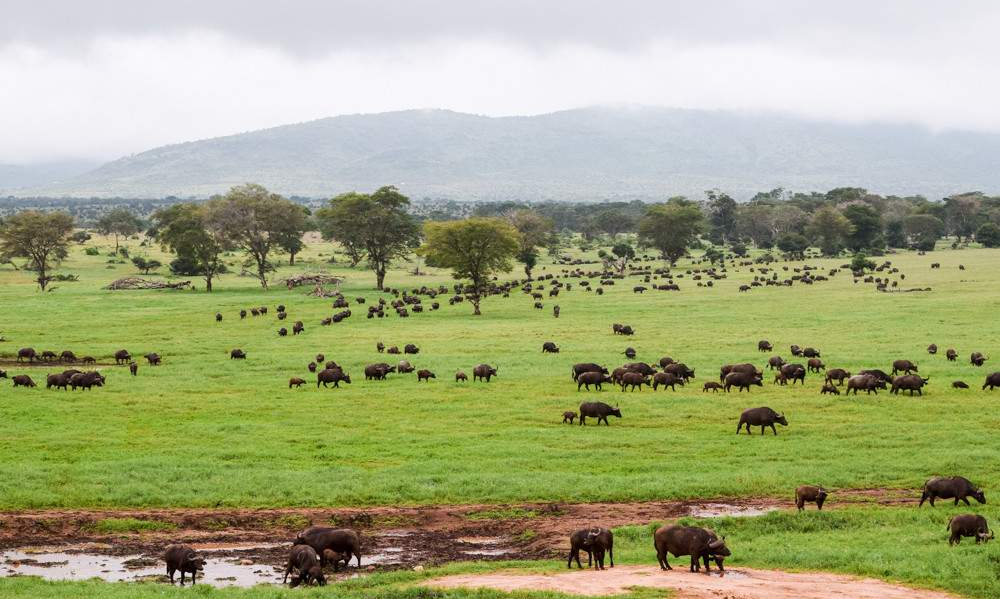
Why Visit
Taita Hills are famous for their rare and endemic plant and bird species, many of which are found nowhere else on Earth. The forests serve as one of Kenya’s most important biodiversity hotspots and a vital water catchment area for nearby communities. The Taita Hills Wildlife Sanctuary, located at the base of the hills, is renowned for its peaceful environment, excellent elephant and lion sightings, and panoramic lodges that overlook open plains. The area’s mix of natural beauty, conservation value, and cultural depth makes it a distinctive stop within Kenya’s southern safari circuit.
Additional Information
Best Time to Visit
• June to October offers dry, clear weather suitable for both wildlife viewing and hiking in the hills.
• December to February provides warm and sunny days ideal for photography and short excursions.
• March to May brings the long rains, which create lush vegetation and good birdwatching opportunities but may limit accessibility.
Highlights
• Unique forest ecosystems that shelter endemic species such as the Taita thrush and Taita apalis, both globally endangered birds.
• Taita Hills Wildlife Sanctuary, home to elephants, lions, giraffes, zebras, and numerous antelope species within scenic landscapes.
• Lumo Community Wildlife Sanctuary, known for community-led conservation and a rich variety of wildlife.
• Panoramic hilltop viewpoints offering sweeping vistas across Tsavo plains and the Pare Mountains in neighboring Tanzania.
• A cool and refreshing climate that provides a comfortable retreat after visiting the hotter lowland parks.
• Opportunities to engage with Taita communities and learn about traditional livelihoods and conservation efforts.
Travel Tips
• Combine a visit to the Taita Hills with Tsavo East or Tsavo West National Parks for a complete southern Kenya itinerary.
• A 4×4 vehicle is recommended for accessing the wildlife sanctuaries and steep hill roads.
• Carry warm clothing for evenings, as temperatures in the hills can be cooler than in surrounding areas.
• Birdwatchers should bring binoculars and field guides to identify the many endemic and forest species.
• Support local conservation and community projects by visiting lodges and sanctuaries that operate sustainably.






